15 Dec The Future of SEO Lies in the “Messy Middle” of the Purchase Journey via @gregjarboe
I have seen the future of SEO and it lies in the “messy middle” of the purchase journey.
The “messy middle” is where people decide what to buy, according to research by Google’s Market Insights team in the U.K.
Now, I wish that this vision of where SEO is headed in 2021 and beyond was mine. If I’d figured this out on my own, then I could charge big bucks to share this knowledge and wisdom with others.
But, alas, this blinding flash of strategic insight arrived as I was reading “How people decide what to buy lies in the ‘messy middle’ of the purchase journey,” which was published in Think with Google back in July 2020.
The article was written by Alistair Rennie and Jonny Protheroe, who work on Google’s consumer insights team in Great Britain. This 1,000-word article is actually a summary of their team’s 98-page report, which is entitled, “Decoding Decisions: Making Sense of the Messy Middle.”
Here’s the gist:
“People don’t make decisions in a neat, linear fashion. A lot happens between the moment they realize they have a need or a desire for something and the moment they make a purchase,” write Rennie and Protheroe.
They call this “complex space between triggers and purchase, where customers are won and lost,” the messy middle. They also report the findings of their team’s research on how consumers behave in this messy middle. And they conclude, “It’s more important than ever for brands to learn how to make sense of it.”
I recognized instantly that the “messy middle” was a big idea.
And I quickly incorporated several key findings from Google’s research – with proper attribution – into a virtual class that I taught at the New Media Academy in the United Arab Republic on August 13, 2020.
Now, I developed a model of how search works more than 20 years ago when I was the director of corporate communications at Ziff-Davis. In 1995, Ziff-Davis invested in Yahoo. And as a result, I helped to launch Yahoo Internet Life in the U.S. as well as Yahoo France, Yahoo Germany, and Yahoo U.K.
In 1998, I observed that search had reversed Harold Lasswell’s classic model of communication, which focused on answering five questions:
- Who?
- Says what?
- In which channel?
- To whom?
- With what effect?
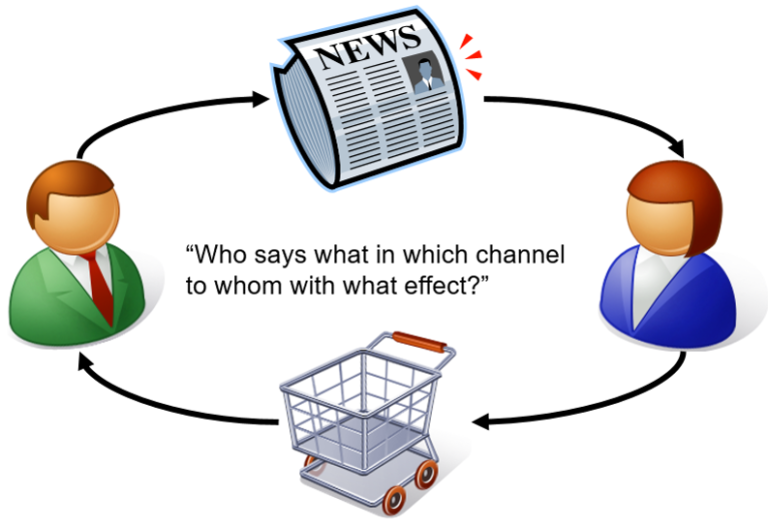

To understand how search works, I proposed an alternative set of questions:
- Who?
- Seeks what?
- In which channel?
- From whom?
- With what effect?
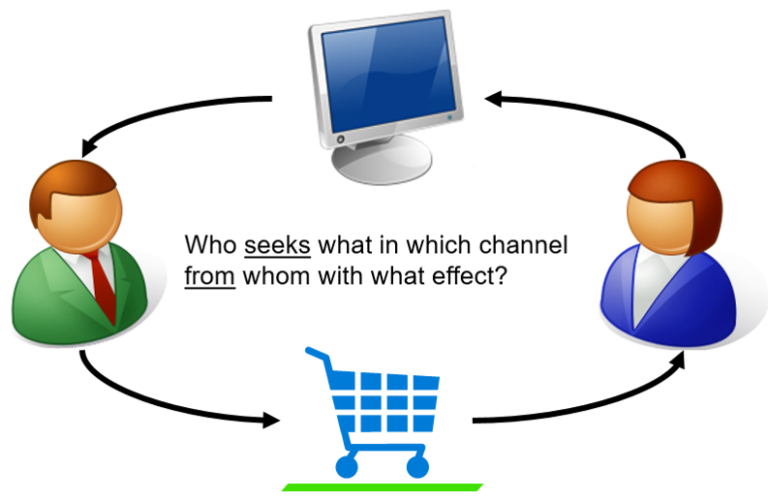

I still believe that my model is the right one to use in 2021 and beyond.
But now I’ve put Google’s new model of the “messy middle” in the middle of my model – to explain why search is the channel where people decide what to buy.
So, here’s how I’ve integrated what I learned this summer from Google’s consumer insights team into what I’ve known about search for more than 20 years.
Who?
The first key finding of Google’s new research concerns consumer behavior: “As people explore and evaluate in the messy middle, cognitive biases shape their shopping behavior and influence why they choose one product over another,” write Rennie and Protheroe.
While many hundreds of these biases exist, Google’s consumer insights team prioritized the six below in their research:
- Category heuristics: Short descriptions of key product specifications can simplify purchase decisions.
- Power of now: The longer you have to wait for a product, the weaker the proposition becomes.
- Social proof: Recommendations and reviews from others can be very persuasive.
- Scarcity bias: As stock or availability of a product decreases, the more desirable it becomes.
- Authority bias: Being swayed by an expert or trusted source.
- Power of free: A free gift with a purchase, even if unrelated, can be a powerful motivator.
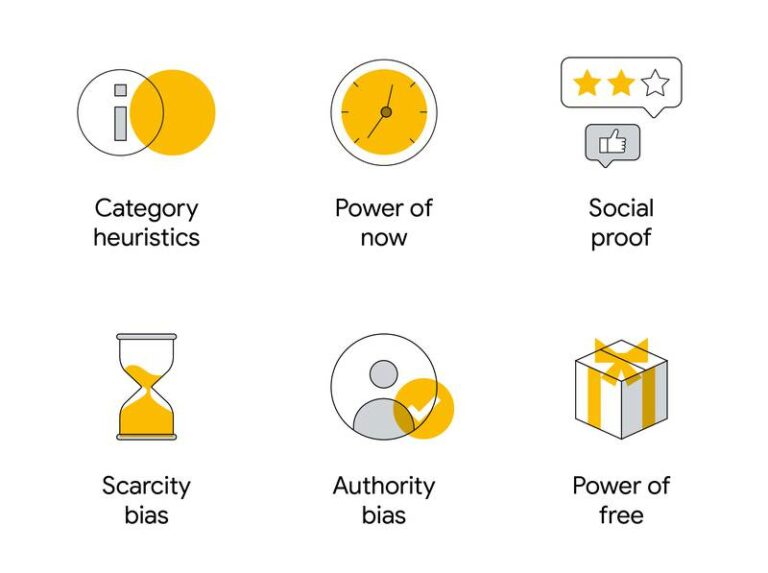

This particular finding won’t come as a surprise to a savvy content marketing strategist.
But a savvy SEO professional should know how to intelligently and responsibly apply these behavioral science principles, too.
For example, this means that we should be creating – and optimizing – half a dozen different pieces of content which each address the informational needs and behavior of half a dozen different segments of shoppers, in order to win or defend our brand’s market share in the messy middle.
Creating and optimizing one or two pages for each product or brand is so 2019.
Seeks What?
The second key finding wasn’t actually a finding by Google’s consumer insights team.
It was more like the “aha moment” that I experienced when they casually disclosed that they had used Google Trends data to find real-world evidence for their “messy middle” model.
Hey, if they could use Google Trends to find this evidence, then we can, too!
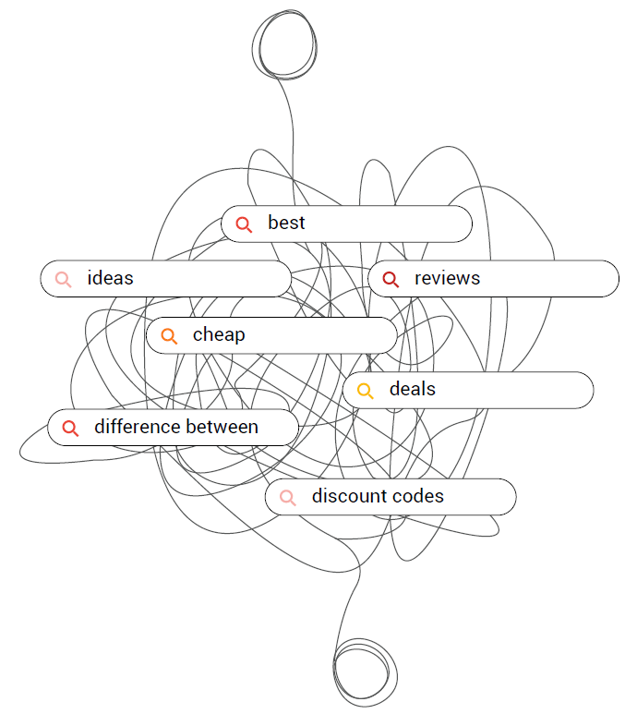

Now, every SEO pro worth his or her salt knows that people use search to look for information about a particular thing.
But, because the amount of available information is so vast, searches are often modified with an additional word or phrase that describes what the searcher wants to know about that thing.
We analyze these words or phrases to determine “search intent.”
Well, Google’s consumer insights team looked at seven main search modifiers:
- “Ideas”
- “Best”
- “Difference between”
- “Cheap”
- “Deals”
- “Reviews”
- “Discount codes”
They found some have a more expansive, information-gathering intention, while others are more reductive and clarifying.
So, when we’re analyzing queries in the future to determine search intent, we now have two buckets to put them into: One for exploration and the other for evaluation.
In Which Channel?
According to Rennie and Protheroe,
“People look for information about a category’s products and brands, and then weigh all the options. This equates to two different mental modes in the messy middle: exploration, an expansive activity, and evaluation, a reductive activity. Whatever a person is doing, across a huge array of online sources, such as search engines, social media, aggregators, and review websites, can be classified into one of these two mental modes.”
They add,
“People loop through these twin modes of exploration and evaluation, repeating the cycle as many times as they need to make a purchase decision.”
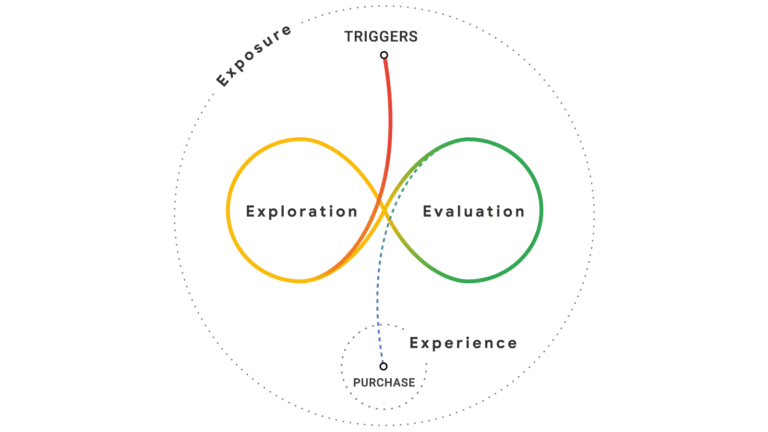

So, SEO professionals and content marketers should immediately replace the hundred-year-old model of the sales funnel (Awareness, Interest, Desire, and Action) with this new model of the “messy middle.”
From Whom?
The fourth key finding isn’t a finding, either. It is advice to marketers from Google’s consumer insights team on how to succeed in the messy middle.
According to Rennie and Protheroe,
“Although the messy middle might seem a complicated place, it’s important to remember that to consumers it just feels like normal shopping. (So,) the goal isn’t to force people to exit the loop shown in the model, but to provide them with the information and reassurance they need to make a decision.”
They add, “Luckily, whether you’re a category giant or a challenger brand, the approach is the same.”
The goals of this approach are:
- Ensuring brand presence so your product or service is strategically front of mind while your customers explore.
- Employing behavioral scienceprinciples intelligently and responsibly, so that your assets and messages become more compelling as customers evaluate their options.
- Closing the gap between trigger and purchase, so that your existing and potential customers spend less time exposed to competitor brands.
- Building flexible, empowered teams who can work cross-functionally to avoid traditional branding and performance silos that are likely to leave gaps in the messy middle.
With What Effect?
Although there is a brief mention of “the importance of measurement” on page 92 of “Decoding Decisions: Making Sense of the Messy Middle,” Rennie and Protheroe say, “Measuring advertising effectiveness is a large topic, beyond the scope of this report.”
But that that doesn’t help SEO professionals and content marketers, who also need to connect their content creation and optimization efforts with relatively blunt metrics like sales and revenue.
So, here are the key performance indicators (KPIs) which I recommend that you use until better ways to measure our results come along:
- For a brand-building marketing campaign, you should use Google Surveys before and after a campaign to measure brand lift, including brand awareness, consideration, and purchase intent.
- For a performance marketing campaign, you should use Google’s Campaign URL Builder tool to add campaign parameters to URLs in your content so you can track Custom Campaigns in Google Analytics.
For what it’s worth, I used both sets of these KPIs last year to measure the results of a campaign to launch a new online Master’s program for Rutgers University.
Using Google Surveys before and after our campaign, we found that the percentage of respondents who said they were “familiar with” Rutgers had increased from 13.8% pre-launch to 18.5% post-launch. And we found that the percentage of respondents who said they were “very likely” to recommend Rutgers to a friend or colleague who was interested in getting an online Master’s degree from Rutgers had increased from 16.7% pre-launch to 19.0% post-launch.
And using Google’s Campaign URL Builder tool, we found that:
- Our optimized press release had generated 1% of the new users, but 8% of the leads.
- Google organic search had generated 3% of the new users, but 19% of the leads.
- Google Ads had generated 11% of the new users, but 18% of the leads.
- LinkedIn ads had generated 81% of the new users, but 37% of the leads.
Our case study of this campaign was shortlisted in the Best Integrated Campaign category of the 2019 U.S. Search Awards and won the award for the Best Use of PR in a Search Campaign category.
So, yes, you can measure Digital PR and SEO using the same set of metrics and KPIs that are used for Digital Advertising – including pay-per-click (PPC) advertising.
And, yes, you can increase brand awareness and generate leads at the same time.
Better Late Than Never
Now, I apologize for not sharing my take on Google’s research with you before now. I was prompted to correct this oversight when I recently read “Think with Google’s 10 most-read articles of 2020,” which was published earlier this month.
The #2 article on the list was “How people decide what to buy lies in the ‘messy middle’ of the purchase journey.”
All I can add to their strategic insights is this small bit of tactical advice:
If it’s more important than ever for brands to learn how to make sense of the messy middle, then the future of SEO lies in learning how to play a crucial role in this complex space where customers are won or lost.
Yes, I realize that most technical SEO professionals are currently focused on preparing for the Google Page Experience Update. And, if they bust their humps to avoid a bump in the night sometime in May 2021, then they might even earn a “pat on the back” from a mid-level manager at their company or clients.
But, it will be hard for SEO pros to build the business case for getting a bigger budget after they’ve improved their company’s or clients’ Core Web Vitals scores and Page Experience signals.
Heck, the vast majority of senior executives in the C-Suite don’t have a clue what these technical terms mean.
Well, maybe CTOs will realize that technical SEO pros managed to avoid a disaster when the big Google algorithm update happens in May 2021.
But, if you mistakenly think that this will earn you a bigger budget, then ask grizzled veterans in the IT department what they got after fixing the Y2K bug, which was expected to cause a disaster when the year changed from 1999 to 2000. They got zero, zilch, zip.
This may seem unfair. But, the cost of technical SEO is generally seen as an expense – and every CFO worth his or her salt tries to keep expenses under control.
That’s why the future of SEO lies in the “messy middle” of the purchase journey.
CMOs understand the importance of getting their brand’s content found when people decide what to buy.
So, if SEO professionals learn how to explain the role that they – as well as the content marketing and digital PR teams – can play in the complex space where customers are won or lost, then they can build the business case for getting a bigger budget.
And every CMO worth his or her salt knows how to make the business case for “investing” in growth.
So, as companies and agencies close the books on 2020, the vision of SEO and content marketing playing a bigger role in driving growth in 2021 and beyond has never been clearer.
More Resources:
- It’s Time to Put the ‘Marketing’ Back in ‘Content Marketing’
- 10 Important 2021 SEO Trends You Need to Know
- Actionable SEO Tips and Strategies That Work
Image Credits
In-post image 1 and 2 by author, December 2020
In-post image 3-5: thinkwithgoogle
Sorry, the comment form is closed at this time.